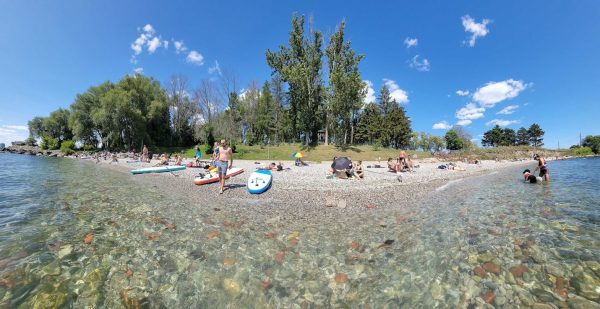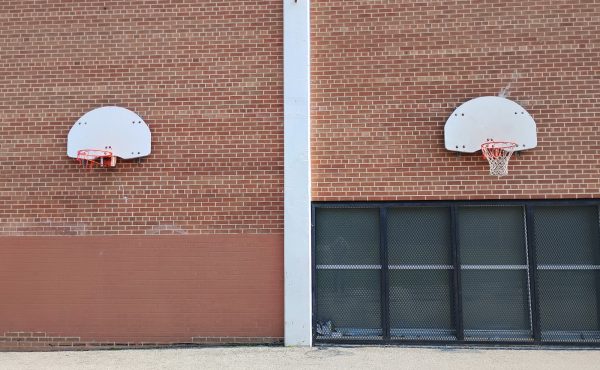The investigation by Ontario Auditor-General Bonnie Lysyk into the Ford government’s removal of 7,400 acres of prime farmland and wetlands from the Greenbelt to enrich a favoured group of developers by more than $8 billion, and the integrity commissioner’s finding that Housing Minister Steve Clark broke ethics rules, are strengthening the resolve of opponents of Ford’s other signature project, who call his plans for Ontario Place and the Ontario Science Centre “a generational mistake.”
At a recent event, a blue-ribbon panel including Ken Greenberg, former City of Toronto director of urban design and architecture, and David Crombie, former mayor of Toronto and Conservative cabinet minister, condemned the Ford government’s plan to build a private spa, cut down 850 trees at Ontario Place, and demolish the Ontario Science Centre.
Organized by the advocacy group Ontario Place for All, they spoke at the Urbanspace Gallery at 401 Richmond Street West in Toronto on August 16, 2023 against a backdrop of large colour photographs of the West Island of Ontario Place showing mature trees that will be clear-cut to make room for the Ford government’s proposed glass private spa and waterpark. The photos showed families walking, bicycling, picnicking and swimming on Ontario Place’s West Island in every season.

The photos contradicted in full colour the assertion by Kinga Surma, Ontario’s Minister of Infrastructure, that “Ontario Place has been sitting there since it closed its doors in 2012. No one has been going there. It is not being enjoyed.” To paraphrase Mark Twain, rumours of the death of Ontario Place have been greatly exaggerated for years.
Greenberg said the Ford government is repeating a big lie, a common technique developers use to persuade the public that a heritage building is unsalvageable – that Ontario Place is a wasteland and that the Ontario Science Centre is falling down and no one goes there. In fact, despite years of neglect by provincial governments of both stripes, Ontario Place was heavily used during Covid as folks searched for outdoor trails to walk and bicycle. The Ontario Science Centre was closed for a year a half during Covid, but the number of visitors has rebounded.
Ironically, both Ontario Place and the Ontario Science Centre were Centennial projects launched by Conservative premiers John Robarts and Bill Davis, and now a Conservative premier wants to destroy their legacy.
“They say nobody goes there,” said Greenberg. “Nobody is using it. Everything can be trashed. There’s nothing to be saved. These photos show how people year-round — right through the winter — have been using and enjoying Ontario Place. More than a million people visited Ontario Place in the past 12 months, and that doesn’t include the concerts at Budweiser Stage. During Covid, we learned how absolutely essential urban parks are.”
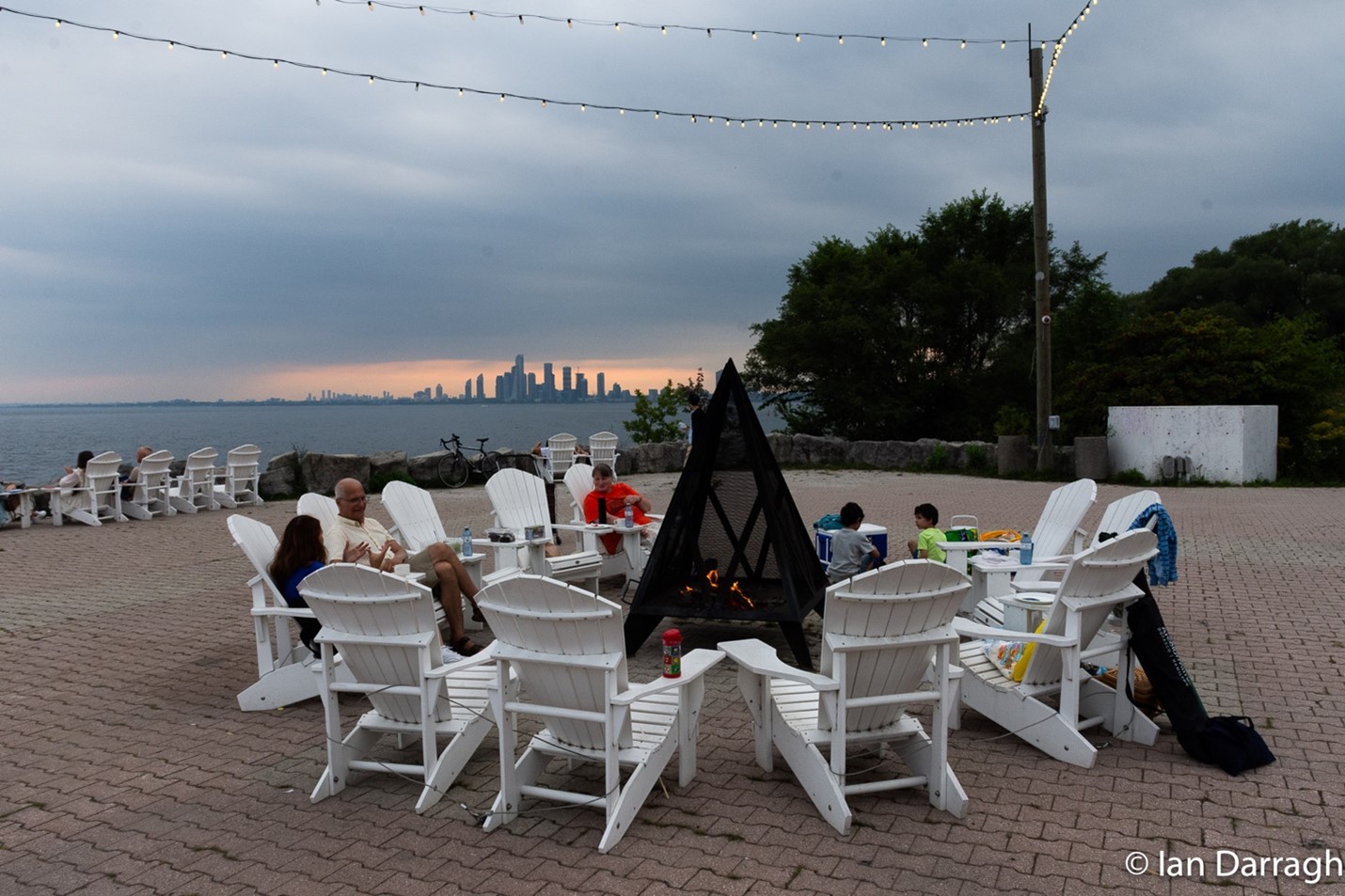
On a Sunday afternoon in August I visited the West Island of Ontario Place where the proposed Therme Spa is to be built to see for myself if it is indeed “a deserted wasteland” as Ontario Minister of Infrastructure Kinga Surma contends.
I took the streetcar from Union Station to the Exhibition Place stop, and when I got off the streetcar found myself in a fenced enclosure whose only exit was the grounds of the Canadian National Exhibition (The Ex). I had to persuade the guard at The Ex entrance that I wanted to walk through the Ex to Ontario Place. He checked my camera bag for explosives; scolded me for not getting off the streetcar one stop earlier (there was no announcement on the streetcar PA), then let me in without an Ex ticket. (The TTC doesn’t make it easy to use the “better way” to get to Ontario Place.) I had to fight my way through the throngs enjoying the Ex. Carnival barkers were screaming their pitches to get folks to try games of chance to win stuffed animals while overhead kids were screaming as rides tossed them into the air. Using Google maps, I found a bridge that took me over Lake Shore Boulevard to the entrance to Ontario Place. There was a concert at the Budweiser Stage (ZZ Top, an American band formed 51 years ago), and folks were streaming in for the show. Originally, I had planned to walk through Trillium Park along the waterfront path to the West Island, but it has been blocked by construction fencing. So I had to take another route along the huge parking lots bordering Lake Shore Boulevard to a bridge leading to the West Island. A constant stream of folks passed over the bridge with me, some riding bicycles, others electric scooters or unicycles, while families pushed strollers and hauled wagons loaded with kids and food and drinks for picnics.
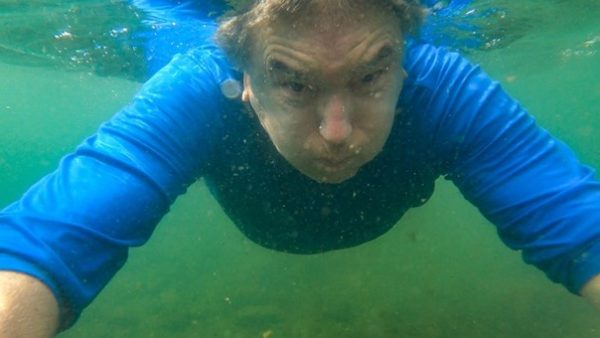
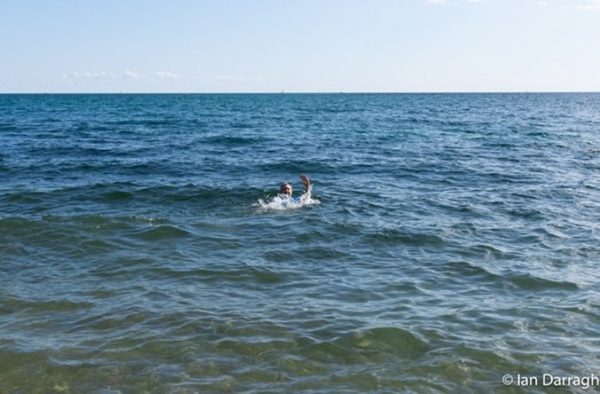
The circular paths of the West Island were peaceful after the hubbub and pounding music of the Ex. I walked by geodesic domes covered with vines and many of the attractions were boarded up, but the washrooms were still open and clean. I came to a beach facing south out into Lake Ontario full of families and dogs swimming in the lake. The beach was made of small rounded pebbles and the water was gin-clear. Ducks paddled along the water’s edge while just offshore double-crested cormorants were diving and surfacing with wriggling fish in their beaks. Long vees of Canada geese flew overhead. Children were throwing pebbles into the lake while several folks went in for a swim. Dog owners were tossing sticks into the lake for their dogs to joyously retrieve and bring back to shore.
“My dog Akoni is part king shepherd and part wolf. I first took him to this beach when he was six months old and he broke his leash to get into the water. Ever since then he’s loved this beach. It would break my heart to not be able to come to this beach with my dog. This is the place I come to when I’ve had a bad day. I’ve made amazing friends here from all walks of life.”
—Lyndsay-Ana Moffatt
“This is the cleanest beach in downtown Toronto,” said Prof. Steve Mann, a professor in the department of electrical and computer engineering at the University of Toronto. His Swim Ontario Place group, which has 1,600 members, regularly tests the water. With a doctorate from the Massachusetts Institute of Technology, Dr. Mann is credited with many patents, including inventing the first wearable computers. Mann says he has been coming to this beach since childhood, and swims here throughout the year, including in winter. He tells me the beach was designed by Michael Hough, the lead landscape architect for Ontario Place, and suggests I watch a video on YouTube of a lecture Hough gave at the University of Manitoba. Hough describes how he chose round pebbles for the beach, rather than sand, because pebbles wouldn’t be eroded by Lake Ontario’s high waves that pound the shore during storms. The location of the beach, protected in a cove facing the open water of Lake Ontario, keeps it clean. Many regular swimmers call it “Michael Hough Beach” to honour Toronto’s distinguished landscape architect, who also designed the Don Valley Brick Works Park, including the Weston Family Quarry Garden.
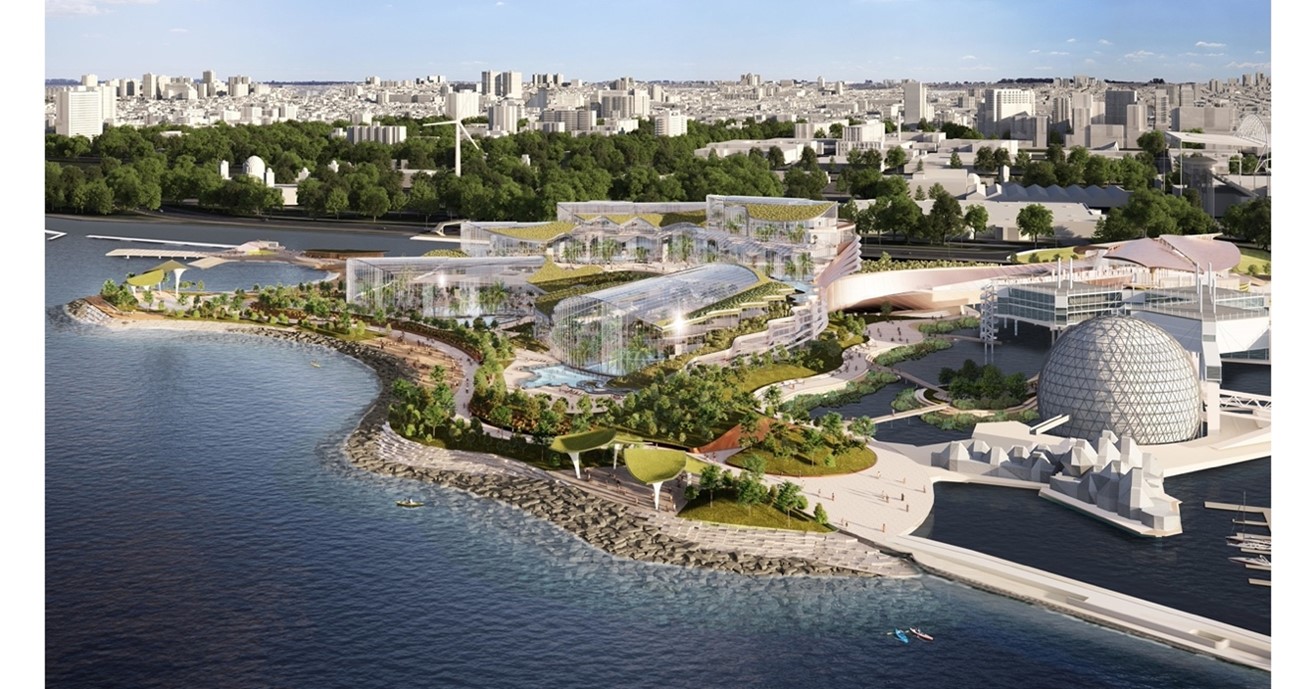
Mann says the Therme Group’s redesign would relocate the beach to the western shore of West Island, exposing it to pollution from a stormwater drain that overflows with untreated sewage during heavy rainfall. As if to underline this problem, Sunnyside Beach west of Ontario Place was closed due to high bacteria counts the day I visited Ontario Place. The location of the new proposed beach would face the prevailing westerly winds, and garbage and plastics that accumulate along the lakeshore would be carried by currents and the wind onto the beach. The other problem is that it would be close to Lake Shore Boulevard West and the Gardiner Expressway, and be contaminated by particulates from trucks and cars.
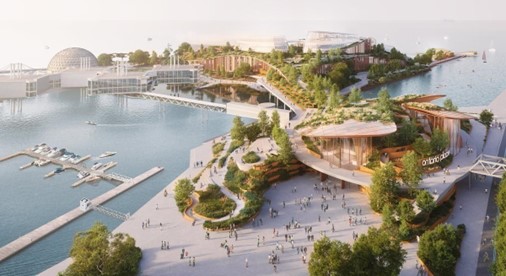
Prof. Mann ran for mayor in the 2023 Toronto election on a campaign of saving Michael Hough Beach and transforming Ontario Place into a hub for research. He has asked the federal government to undertake a complete environmental assessment of the proposed redesign of Ontario Place. The province’s very limited environmental impact assessment excluded the whole West Island and other areas it plans to privatize.
“A comprehensive environmental impact study needs to be done before the government’s plans to redevelop Ontario Place can proceed,” said David Crombie. “The auditor general exposed a pattern of behaviour. There is a stunning lack of respect for history, heritage, and the environment. The Ford government employs secrecy to corrupt public goals — this is the same pattern of behaviour uncovered by the auditor general.”
The current plan to build a spa and waterpark on the West Island of Ontario Place would require clearcutting 850 trees on the island that have matured since they were planted 52 years ago when Ontario Place opened. It will require enlarging the West Island by adding 10 acres of landfill around the shoreline, thus destroying the existing fish and shorebird habitat which has developed on the man-made island over the past five decades.
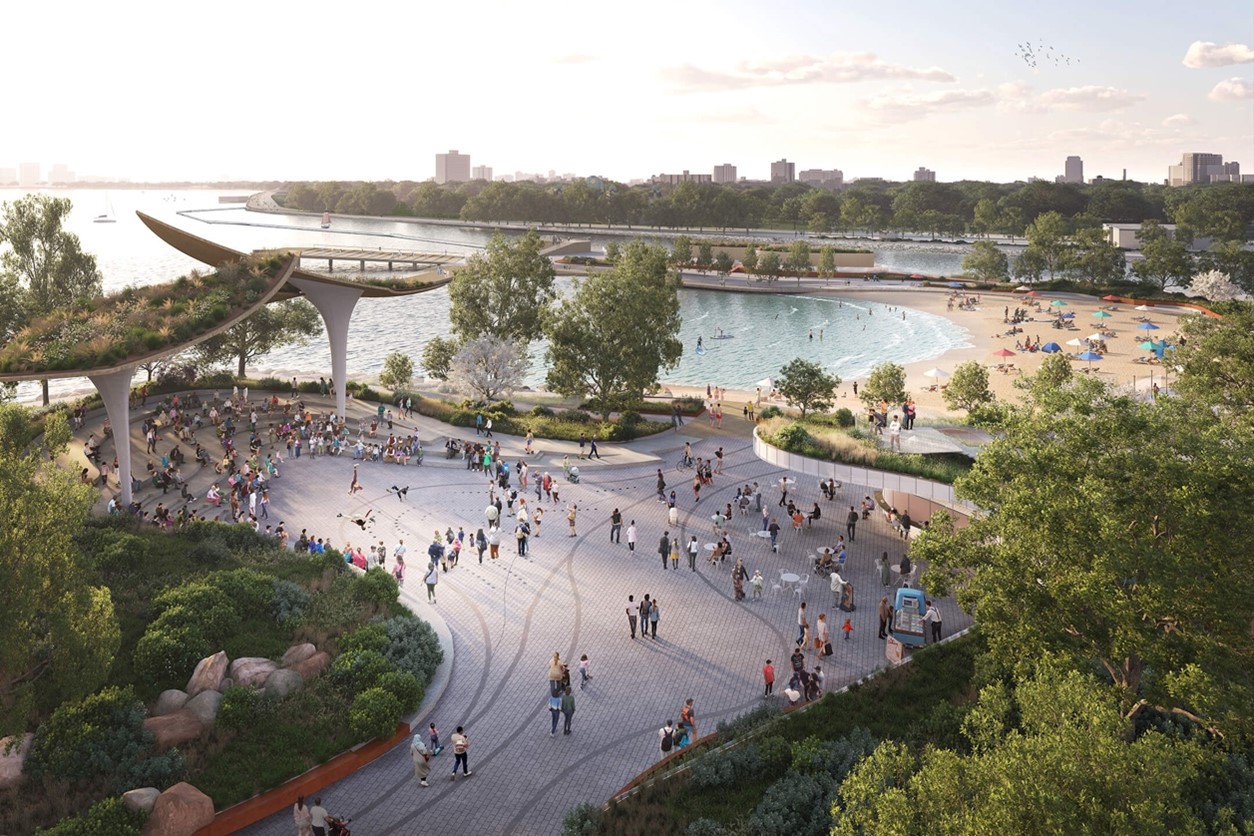
Doug Ford owns a cottage in Muskoka, and one irony is that the shoreline preservation bylaws in cottage country are very strict to protect the water quality of the lakes. Ford cannot cut trees on his property within 200 feet of his lake shore; natural vegetation has to be preserved to reduce run-off; and no fill —even beach sand — is permitted to be dumped in Muskoka lakes without a permit. Cottagers want clean water for swimming and fishing and to protect their investment in their properties. A cottage on a lake with algae blooms has considerably less real estate value. Why would the Ford government not treat the water quality of Lake Ontario with the same consideration as the lakes in cottage country? Why dispense with an environmental impact assessment for the Ontario Place redevelopment, and support the cutting of 850 mature trees and the dumping of 10 acres of fill to enlarge the West Island of Ontario Place? Lake Ontario is the source of drinking water for Toronto and the neighbouring cities along the lakeshore. Its many public beaches serve hard-working families (whose interests Ford claims to represent) who do not have the privilege of owning a cottage.
Even if the federal Minister of the Environment decides not to require a federal impact assessment of the Ontario Place redevelopment plans, there are several federal acts that require permits. The federal department of fisheries and oceans has a mandate to protect fish habitat, and the Ontario Government would have to apply for a permit under the Fisheries Act. In addition, Lake Ontario is subject to the Canadian Navigable Waters Act, and Infrastructure Ontario would have to apply for a permit for the planned landfill around the West Island.
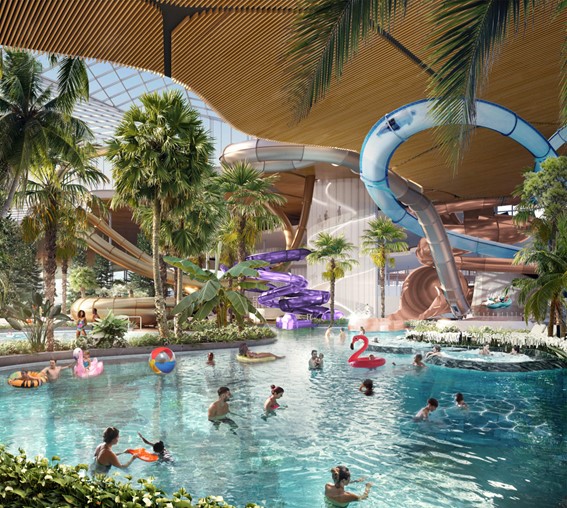
In talking to folks on Michael Hough Beach, I found there was a lot of distrust of the Ford Government and its plans for Ontario Place, and everyone mentioned the auditor general’s report on the Greenbelt, which has heightened concerns that the tendering of public contracts is not transparent, especially since Therme Group’s 95-year lease at Ontario Place has not been made public.

“Building a private spa here is the wrong thing in the wrong place,” said Julia Sasso, a dancer and choreographer, who taught for 16 years in the fine arts faculty at York University. “I am prepared to chain myself to the trees to prevent them from being cut down.”
“Ford gave his buddies what they wanted in the Greenbelt, and he’s doing the same thing here,” said Bruce Georgevska, an immigrant from former Yugoslavia and a cybersecurity expert who walks from his home in Liberty Village to Ontario Place to swim from May to October.
“This is public land. It should be for everyone,” said Georgevska. “The lease with Therme Group should be for 25 years maximum. Not 95 years.”
Founded in 2011, the Therme Group has only existed as a corporate entity for 12 years. Ken Greenberg and other critics believe it is not in the public interest to grant a 95-year lease to a young enterprise that may not survive the next century. What will happen if Therme encounters financial difficulties, or discovers that its Ontario Place spa is not making a sufficient profit? If Therme is bought out, could new management convert the spa into a casino at Ontario Place? Because the terms of the lease are secret, the public has no way of knowing.
“I think this whole thing is a real estate play to get hold of what Doug Ford keeps calling one of the most valuable pieces of real estate on the Lake Ontario waterfront,” said Greenberg.
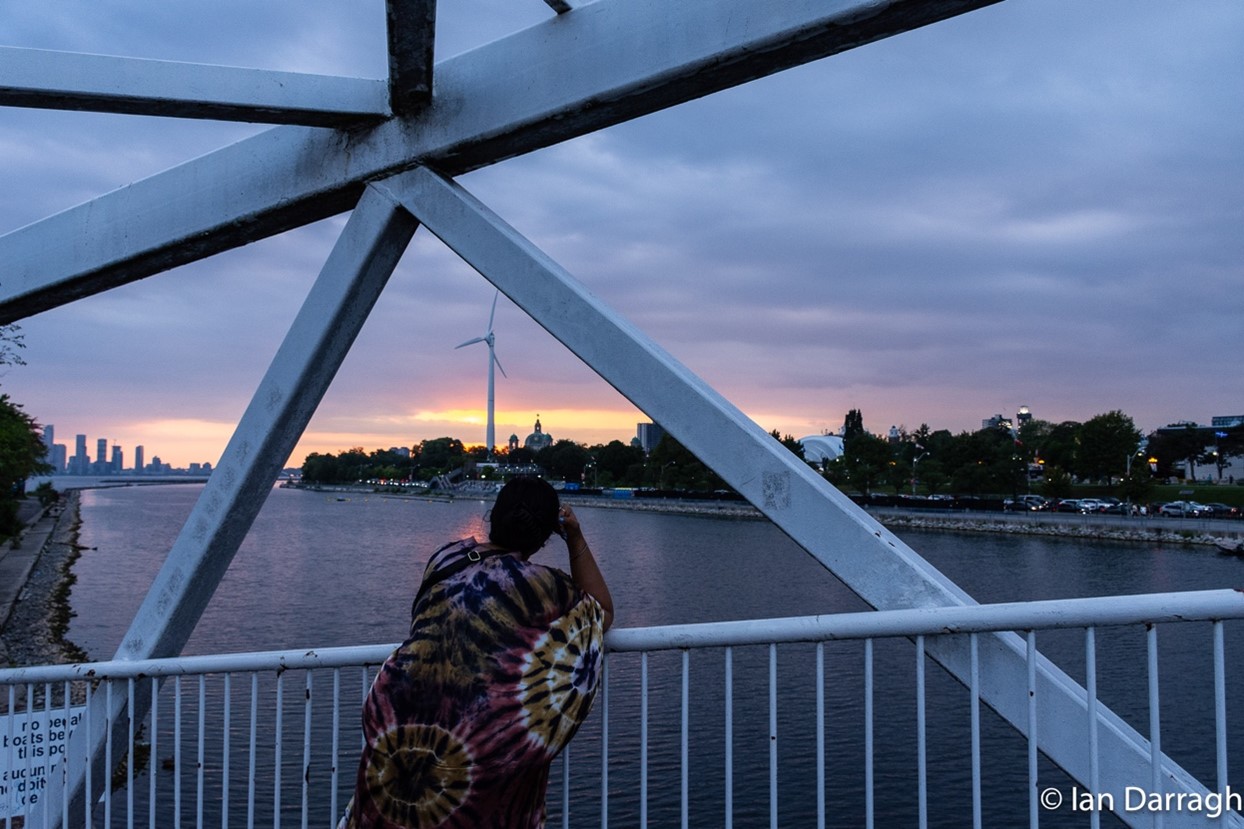
“Why a 95-year lease? For theme parks on public land, leases are never that long, and they are usually public. Ninety-five years is almost a century. It’s akin to a sale. Let’s say in the initial years Therme experiences some success. The group behind Therme is getting an unbelievable piece of real estate on the Toronto waterfront, and once the spa is no longer in operation, who knows, the ownership may have changed? They will come forward and say they effectively own this land. Their long-term goal may be to build condos, hotels, or who knows what?”
Several swimmers urged me to jump into Lake Ontario, saying it was as exhilarating as a hit of cocaine. Growing up in Montreal, I had to admit I was a Lake Ontario virgin. In fact, I had never swum before in any Great Lake. I decided to take the plunge. I waded into the lake, and then launched myself backwards into the waves. Prof. Mann swam out with me and took photographs with a camera attached to his eyeglasses to record my baptism. The water was not as cold as I expected. With the waves, it felt like I was swimming in the ocean. Back on the beach, my whole body tingled as the sun warmed me up. I felt a sense of joy and accomplishment as a I toweled off. I felt I had joined the Michael Hough Beach Club. Free admission!
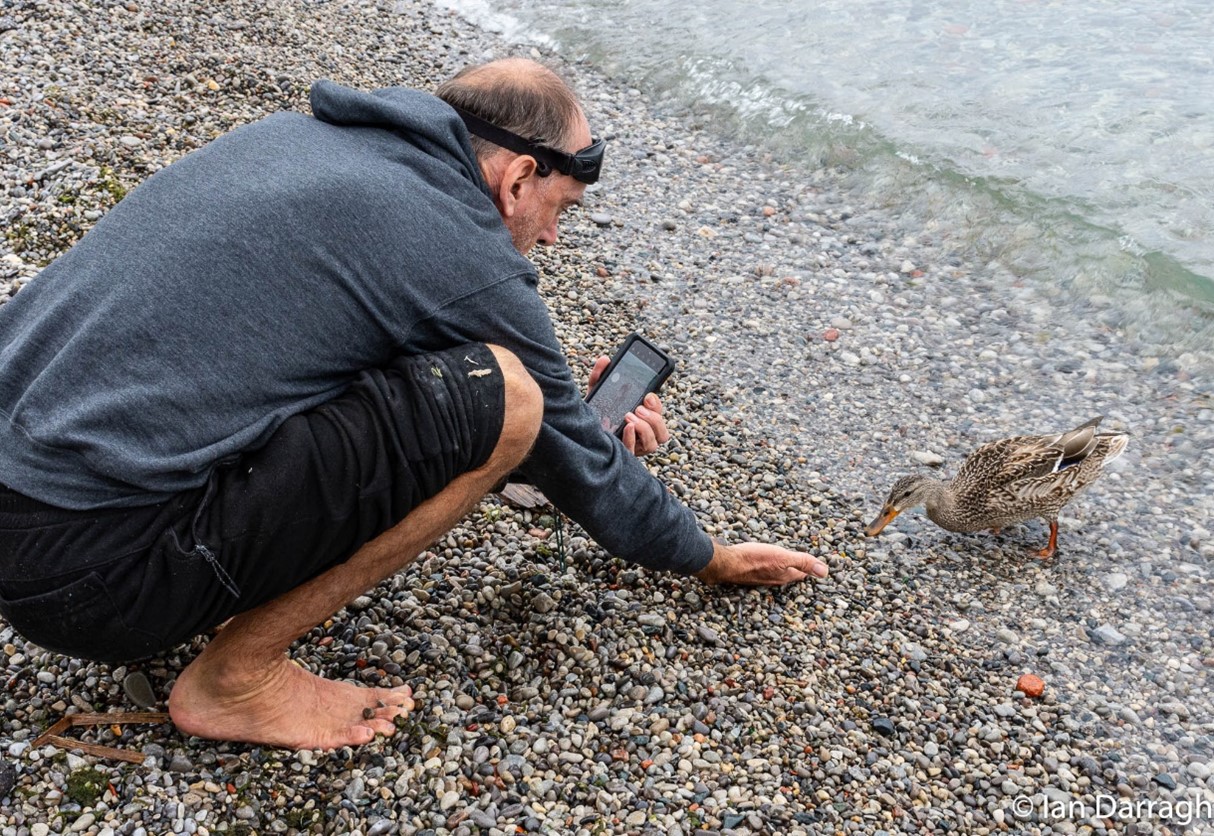
Turboprops from Billy Bishop Toronto City Airport at the foot of Bathurst Street flew over the beach at a low altitude every 15 minutes, a reminder that an airport on the Toronto waterfront really is intrusive next to an urban park.
On my walk from the beach back to Lake Shore Boulevard I met Adele Nagy, who had paid $50 to rent the firepit at a lookout near the beach and was having a picnic with her family and friends. She lives in Welland, Ont., has fond memories of visiting Ontario Place as a child, and wanted her family to have the experience of building a bonfire beside Lake Ontario.
“The plans for the spa sound awful,” she told me. Given that Premier Ford and Minister Surma say Ontario Place is a “wasteland” I found it surprising (and contradictory) that Ontario Place would charge a family $50 to use a firepit, and not provide firewood. Mrs. Nagy and her husband Adib hauled kindling and logs and their picnic on a wagon all the way from the parking lot on Lake Shore.
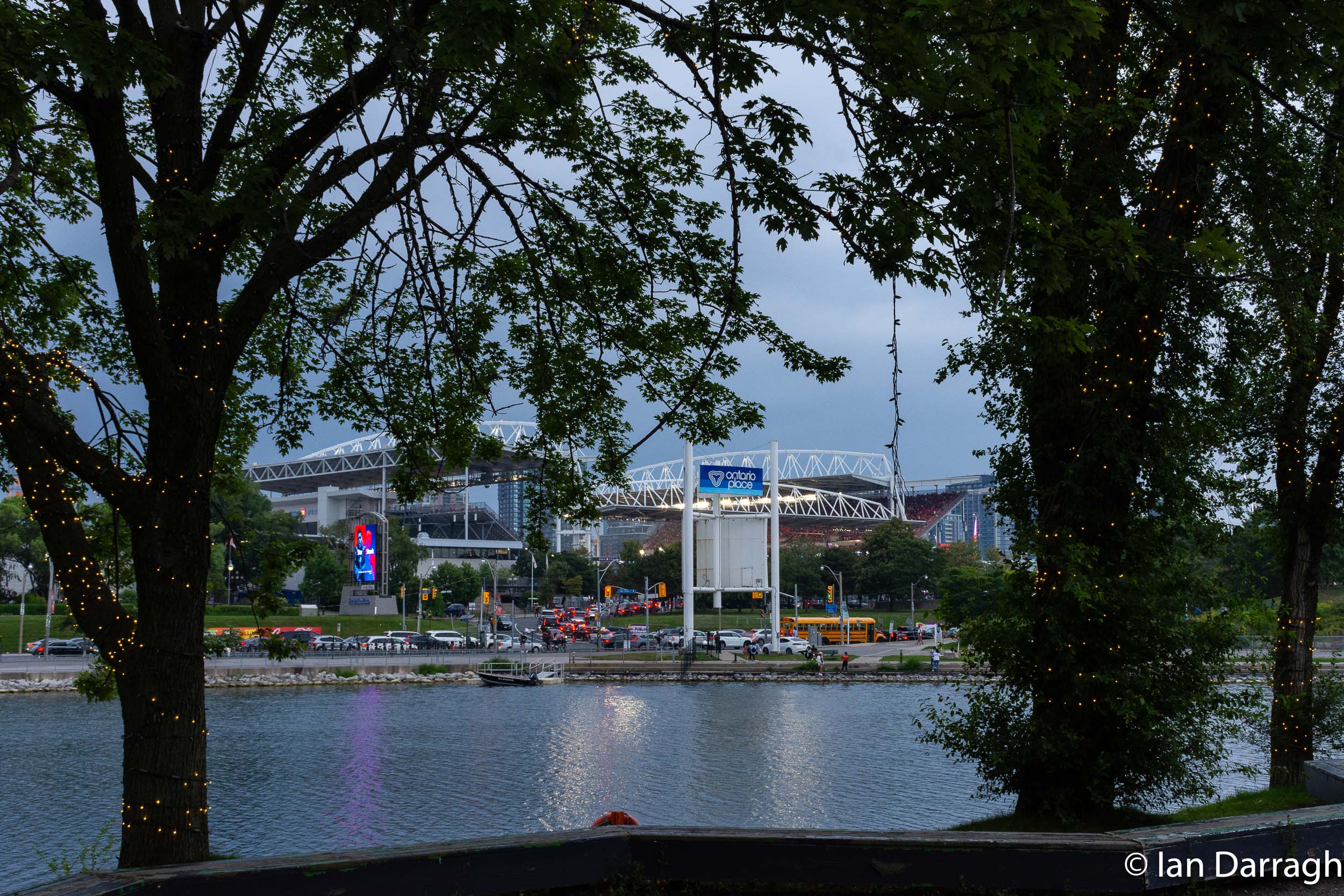
By the time I headed back to catch a streetcar home it was dusk. It was sad to see the massive Gohn Ohn Bell, which commemorates the centennial of Japanese settlement in Canada, surrounded by metal fencing and huge chunks of concrete from the ongoing construction work. Designed by some of Canada’s leading architects – Craig Zeidler Strong and Moriyama and Teshima – it has won three major architectural awards. I wonder if it will survive the redesign of Ontario Place, or be demolished like the Ontario Science Centre, one of Moriyama’s other masterpieces? I asked Therme Group what would happen to the Gohn Ohn Bell and their media person referred me to the Ontario Ministry of Infrastructure. Despite several emails, I never received a response.
Some of the old magic of Ontario Place remains despite the years of neglect. The trees along the path to the bridge to the mainland were wrapped in tiny lights that glowed, guiding me home. The bridge to the mainland was crowded with folks taking photos and selfies of the sun setting behind the wind turbine on Lake Shore Boulevard. A woman in a sari visiting from Philadelphia asked me to take her portrait with the sunset in the background, and handed me her smartphone. Screams of folks on the Ex’s rides and disembodied guitar chords from the rock concert at the Budweiser Stage echoed across the water. But up on the bridge to the Ontario Place’s West Island there was a sense of calm and community.
The City of Toronto Planning Department is holding a public consultation on the revised Ontario Place redevelopment design on Thursday, September 7, 2023 at Beanfield Centre at Exhibition Place (105 Princes’ Boulevard, Toronto, ON M6K 3C3). Panels showing the proposed redesign of Ontario Place will be on display from 3 pm-6 p.m. There will be a presentation and discussion from 6 p.m.-8.30 p.m. when you can provide your feedback on the proposals.
To register: https://tinyurl.com/yfc2n9md
Addendum (Sept. 11): The City of Toronto is holding a virtual public consultation on plans to redevelop Ontario Place on Tuesday, Sept. 12, 2023, 7pm – 9pm ET. To review the revised design proposals and to register for the virtual consultation: https://www.toronto.ca/city-government/planning-development/waterfront/current-projects/ontario-place-redevelopment/
Continue on to read Part 2 of this article.
Ian Darragh is a former editor-in-chief of Canadian Geographic magazine.
Photos by Ian Darragh unless otherwise specified.

